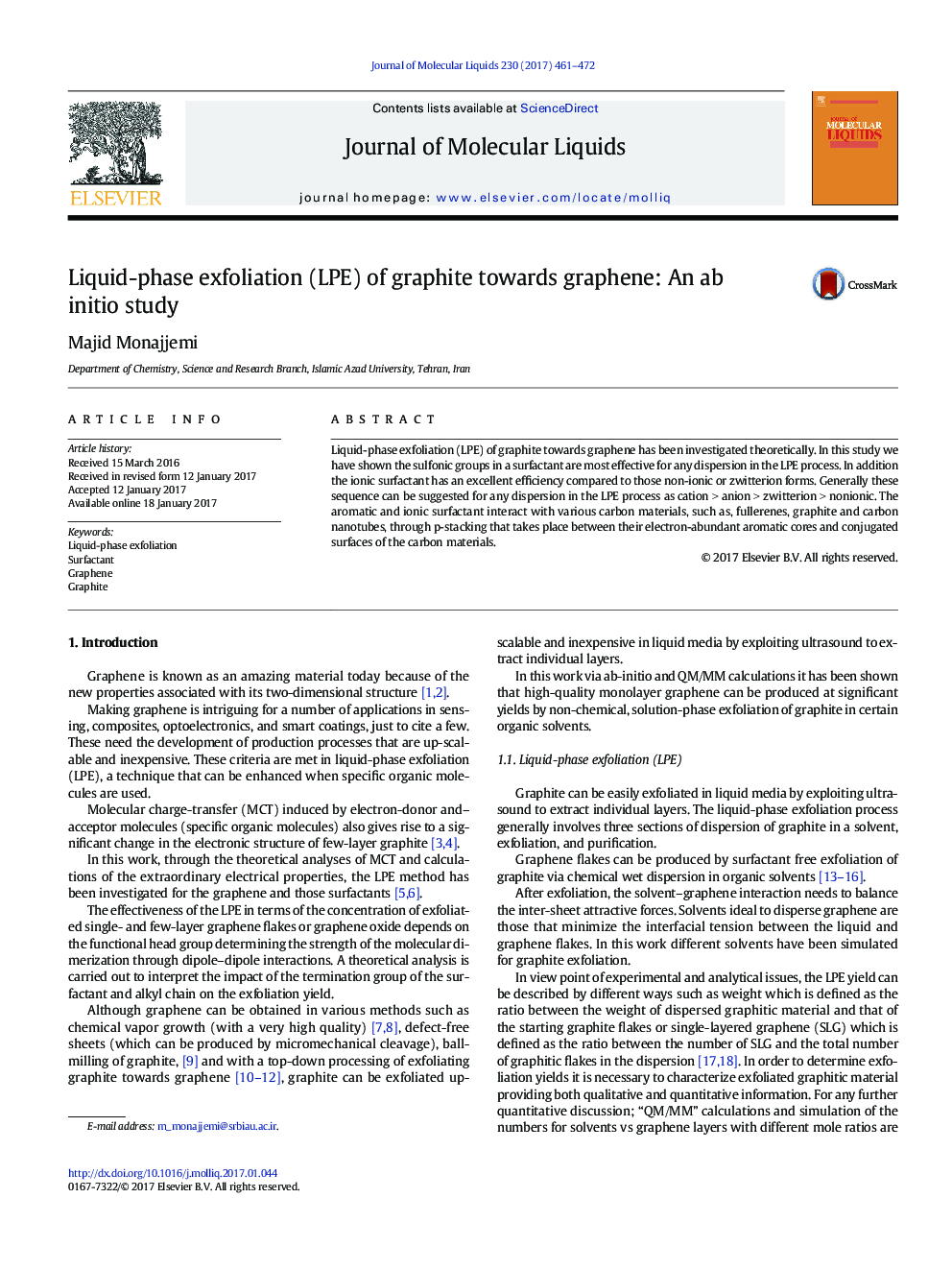| Article ID | Journal | Published Year | Pages | File Type |
|---|---|---|---|---|
| 5408887 | Journal of Molecular Liquids | 2017 | 12 Pages |
Abstract
Liquid-phase exfoliation (LPE) of graphite towards graphene has been investigated theoretically. In this study we have shown the sulfonic groups in a surfactant are most effective for any dispersion in the LPE process. In addition the ionic surfactant has an excellent efficiency compared to those non-ionic or zwitterion forms. Generally these sequence can be suggested for any dispersion in the LPE process as cation > anion > zwitterion > nonionic. The aromatic and ionic surfactant interact with various carbon materials, such as, fullerenes, graphite and carbon nanotubes, through p-stacking that takes place between their electron-abundant aromatic cores and conjugated surfaces of the carbon materials.
Related Topics
Physical Sciences and Engineering
Chemistry
Physical and Theoretical Chemistry
Authors
Majid Monajjemi,
